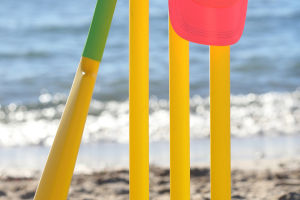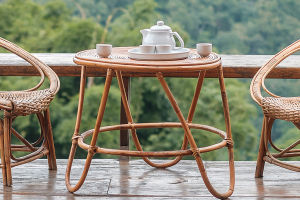
Afternoon Tea Culture

English afternoon tea is a traditional refreshment custom in British culture, usually between three and five in the afternoon. The tradition started in the 19th century when Queen Anne delayed dinner until evening, leading to hunger pangs after lunchtime.
Therefore, she started to enjoy tea and small snacks in the afternoon, which gradually evolved into the afternoon tea culture known today. The main points of English afternoon tea include:

1. Tea: usually black tea, such as Assam, Darjeeling, etc., with milk and sugar, but you can also choose other teas.
2. Teapots and cups: Use fine teapots and cups, usually made of porcelain, for an elegant ambiance.
3. Desserts: There are a variety of dim sums for afternoon tea, including:
Related
 Helicopters defy gravity, saving lives, and transforming transportation with their versatile flight capabilities.
Helicopters defy gravity, saving lives, and transforming transportation with their versatile flight capabilities.
 In the blue ocean, all kinds of exciting and enjoyable marine entertainment projects are waiting for people.
In the blue ocean, all kinds of exciting and enjoyable marine entertainment projects are waiting for people.
 With its unique charm and slow pace, the retro coffee machine has conquered a group of people who pursue a quality of life.
With its unique charm and slow pace, the retro coffee machine has conquered a group of people who pursue a quality of life.
 Motorcycle options: Speed thrills, city comfort, and off-road challenges.
Motorcycle options: Speed thrills, city comfort, and off-road challenges.
 Explore Japan's serene tea culture, blending history, and mindfulness.
Explore Japan's serene tea culture, blending history, and mindfulness.
 Rattan's versatility makes it a top pick for those who want both comfort and style.
Rattan's versatility makes it a top pick for those who want both comfort and style.
- Toast or Sandwich: Typically a sandwich is cut into small pieces, such as cucumber sandwiches, egg salad sandwiches, etc.
- Pastries: such as Scones, enjoyed with jam and cream, as well as various cakes, biscuits, etc.
- Small desserts: such as muffins, macarons, etc.
4. Cream and jam: scones will be paired with special cream and jam to provide rich texture and flavor.
5. Sense of ceremony: Afternoon tea emphasizes an elegant sense of ceremony, from tablecloths, and tableware to snacks, all reflect exquisite design.
6. Socialize and Gather: English Afternoon Tea is usually enjoyed with friends, family, or colleagues and becomes an opportunity to socialize and gather.
This tradition is still popular in the UK and around the world, with many hotels, tea houses, and restaurants offering exquisite afternoon tea sets. Whether experiencing tradition or innovation, afternoon tea is a way to enjoy a meal and socialize.
When talking about English afternoon tea, here are some additions to consider:
1. Dress Requirement: Traditional English Afternoon Tea may have some dress code and participants are encouraged to wear formal or semi-formal attire to match the elegant atmosphere of this event.
2. Seasonal changes: English Afternoon Tea's dessert and drink selections may change seasonally to take advantage of seasonal ingredients. For example, there might be more fruit and light snacks in the summer, and more warm foods and spices in the winter.
3. Afternoon Tea Etiquette: Participants may follow some etiquette rules, such as stirring the tea with a teaspoon, pairing the proper order of desserts, etc. Also, be careful not to be overly loud or disturb other guests' dining experience.
4. Afternoon tea theme: Some occasions may set specific themes for afternoon tea, such as seasons, festivals, movies, culture, etc. This can be seen in the dim sum selection, decor, and ambiance.
5. Innovative changes: While the traditional English afternoon tea is emphasized, there are many modern and innovative changes. Some places may launch afternoon tea sets related to fashion, art, or contemporary culture to attract more people of different ages and backgrounds.
6. Reservations and queuing: Some popular teahouses or restaurants offer afternoon tea service, and reservations may be required. At some popular places, you may have to wait in line in advance to get in.
7. Family afternoon tea: In addition to dining out, many families prepare their own English afternoon tea on weekends or special occasions. This is a wonderful family event to prepare snacks, make tea, and enjoy bonding time together.
In short, English afternoon tea is a traditional custom full of historical, cultural, and social value. Whether in a traditional teahouse or a modern venue, you can experience this wonderful tea culture and feel the elegance and charm of Britain.